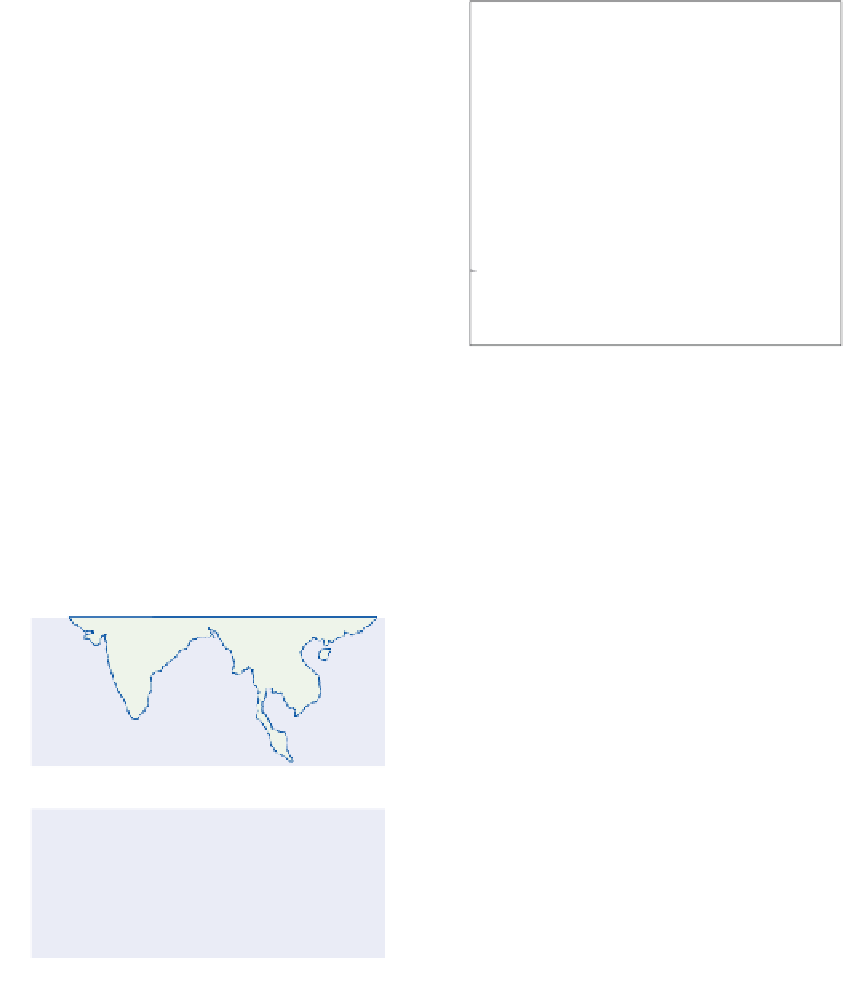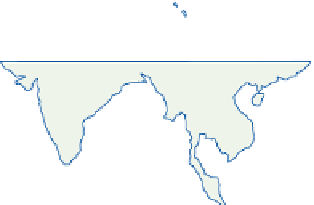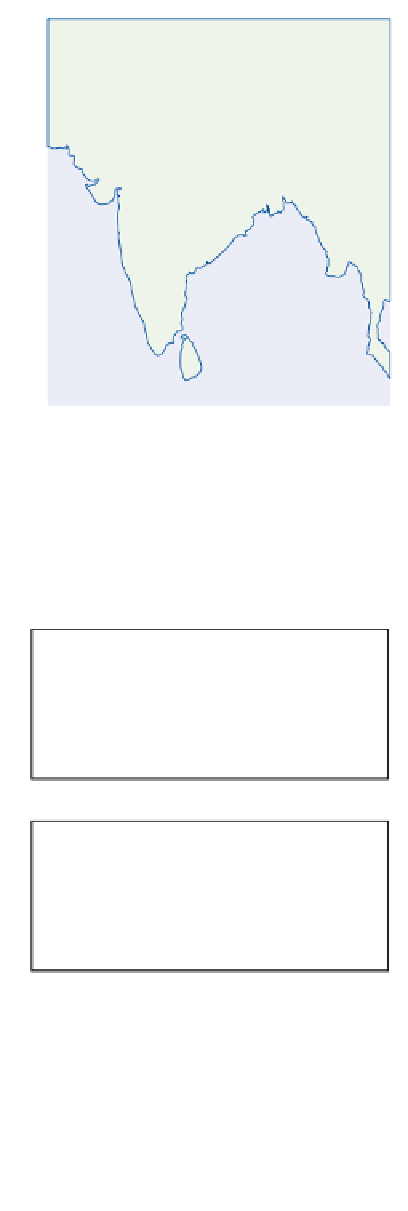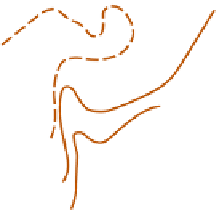Geoscience Reference
In-Depth Information
70°
80°
90°E
70°
80°
90°
100°E
30°N
30°N
LOW
998
LOW
20°
60
10°
10°
HIGH
Figure 11.28
The normal track of monsoon
depressions, together with a typical depression
pressure distribution (mb).
Source: After Das (1987). Copyright © 1987. Reproduced by
permission of John Wiley & Sons, Inc.
Figure 11.26
The percentage contribution of the
monsoon rainfall (June to September) to the annual
total.
Sources: After Rao and Ramamoorthy, in Indian Meteoro-
logical Department (1960); and Ananthakrishnan and
Rajagopalachari, in Hutchings (1964).
July and August. On average, they occur about
twice a month, apparently when an upper trough
becomes superimposed over a surface disturbance
in the Bay of Bengal. Monsoon depressions
have cold cores, are generally without fronts and
are some 1000-1250km across, with a cyclonic
circulation up to about 8km, and a typical lifetime
of two to five days. They produce average daily
rainfalls of 120-200mm, occurring mainly as
convective rains in the southwest quadrant of the
depression. The main rain areas typically lie south
of the Equatorial or Monsoon Trough (
Figure
11.29
) (in the southwest quadrant of the monsoon
depressions, resembling an inverted mid-latitude
depression).
Figure 11.30
shows the extent and
magnitude of a particularly severe monsoon
depression. Such storms occur mainly in two
zones: (1) the Ganges valley east of 76
(A) 500mb
H
20°N
L
L
H
L
L
10°
H
L
584
0
60°
80°
100°
120°E
(B) Sea level
995
L
20°N
L
1010
10°
0
60°
80°
100°
120°E
E; (2) a belt
across central India at around 21°N, at its widest
covering 6
°
Figure 11.27
Monsoon depressions of 12:00
GMT, 4 July 1957. A: shows the height (in tens of
meters) of the 500mb surface, B: the sea-level
isobars. The broken line represents the Equatorial
Trough, and precipitation areas are shown by the
oblique shading.
Source: Based on the IGY charts of the Deutscher
Wetterdienst.
of latitude. Monsoon depressions
also tend to occur on the windward coasts and
mountains of India, Burma and Malaysia.
Without such disturbances, the distribution of
monsoon rains would be controlled to a much
larger degree by orography.
°





















































































































































